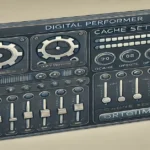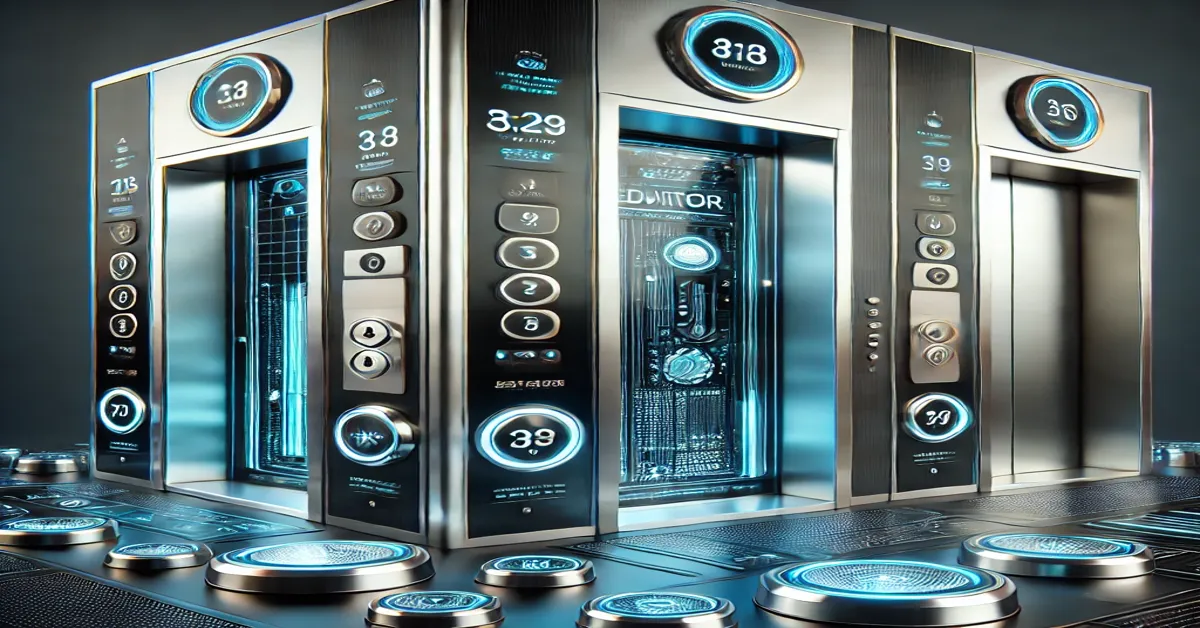Elevator buttons are something we encounter daily, but rarely do we stop to consider the thought and technology that goes into their design. These seemingly simple devices play a crucial role in our interaction with the world around us. From traditional push buttons to touch-sensitive panels and smart technologies, elevator buttons have evolved significantly, driven by advancements in technology and design.
In this article, we’ll explore the fascinating world of elevator buttons, including how they work, the science behind their placement, and the various technologies that have transformed them over the years. Whether you’re a curious enthusiast or someone interested in design and technology, this exploration into elevator buttons is sure to shed new light on an often-overlooked aspect of modern life.
The Evolution of Elevator Buttons
Elevator buttons have come a long way since the early days of simple mechanical systems. Originally, they were nothing more than basic push buttons designed to send a signal to the elevator control system. These buttons were large, prominent, and typically placed in easy-to-reach locations to accommodate all users. As elevator technology progressed, so did the design of the buttons, incorporating new materials, styles, and features to meet the demands of modern architecture and user accessibility.
From Mechanical to Digital: The Journey
- Early Mechanical Systems: In the early 20th century, elevators operated using simple push buttons connected to mechanical switches. Pressing the button would complete a circuit, triggering the elevator’s movement. These early buttons were functional but not particularly sophisticated.
- Introduction of Digital Technology: The introduction of digital technology revolutionized elevator systems, including the buttons. Instead of mechanical switches, elevators began using electronic circuits that allowed for more precise control and improved efficiency. Elevator buttons became smaller, sleeker, and more reliable.
- Touch-Sensitive and Smart Buttons: Today, we’re witnessing the rise of touch-sensitive elevator buttons that rely on capacitive sensors. These modern interfaces are not only more aesthetically pleasing but also provide better durability and hygiene. Additionally, smart elevator systems have emerged, where buttons are integrated with digital screens and software, allowing for features like voice commands and personalized access.
The Science Behind Elevator Button Placement
Elevator button placement is far from random. There’s a science to where buttons are located, how they’re designed, and how they interact with users. Modern button placement must consider various factors, including accessibility, ergonomics, and user behavior.
Accessibility Considerations
One of the most important aspects of elevator button design is ensuring accessibility for all users, including those with disabilities. Buttons must be placed at heights that are easily reachable for wheelchair users, while also accommodating the average standing user. The Americans with Disabilities Act (ADA) in the United States, for example, requires elevator buttons to be located no higher than 48 inches from the floor, ensuring easy access for everyone.
Ergonomics and User Interaction
Elevator button placement also takes into account the way people interact with technology. Studies have shown that users prefer buttons placed at waist or chest height, as this requires less effort to press. Additionally, the size of the buttons matters. Buttons that are too small or too close together can lead to mistakes, while larger, well-spaced buttons improve accuracy and user satisfaction.
Cognitive Load and User-Friendly Design
In busy buildings with multiple elevators, users often need to select floors quickly. Elevator buttons are typically arranged in a grid format that makes it easy to identify the correct floor number without confusion. Modern elevators may also use digital displays that show the available floors, simplifying the selection process further.
Materials and Durability: What Makes a Good Elevator Button?
The materials used in the construction of elevator buttons are critical to their performance and durability. Because elevator buttons are one of the most frequently touched surfaces in any building, they must withstand constant use while maintaining functionality.
Common Materials Used
- Stainless Steel: Stainless steel is one of the most common materials used for elevator buttons due to its durability and resistance to corrosion. It’s also easy to clean, making it ideal for high-traffic environments like office buildings and hospitals.
- Plastic and Polycarbonate: Plastic and polycarbonate materials are often used for the internal components of elevator button’s. These materials are lightweight, durable, and resistant to wear and tear. Polycarbonate, in particular, is popular for its transparency and impact resistance, making it suitable for buttons with backlighting.
- Glass and Touch Panels: In modern smart elevators, touch-sensitive glass panels are becoming more common. These panels use capacitive sensors, which detect touch through the electrical properties of the human body. While aesthetically pleasing, they require advanced engineering to ensure they’re durable and functional in a public setting.
Hygiene and Safety Features
Elevator button’s are touched by hundreds or even thousands of people every day, which raises concerns about hygiene. In response to this, many manufacturers are integrating antimicrobial coatings into their button designs. These coatings reduce the presence of harmful bacteria on surfaces, contributing to a healthier environment in places like hospitals and office buildings.
Additionally, touchless technology is becoming more popular, with some elevators featuring buttons that don’t require physical contact. Instead, users can activate the button with a simple wave of the hand, reducing the spread of germs.
The Future of Elevator Buttons: Smart and Connected Technologies
As technology continues to evolve, elevator button’s are being integrated into broader smart systems that enhance the user experience. These innovations are reshaping the way we interact with elevators, making them more intuitive, efficient, and connected.
Voice-Activated Controls
One of the most exciting advancements in elevator technology is the integration of voice-activated controls. Instead of pressing a button, users can simply speak their destination, and the elevator will respond accordingly. This is particularly beneficial in environments where hands-free operation is necessary, such as in hospitals or for individuals with mobility challenges.
Smartphone Integration
Smart elevators are now being equipped with mobile app integration, allowing users to call an elevator, select their floor, or even access certain restricted floors directly from their smartphones. This eliminates the need for physical buttons altogether, making the process more seamless and convenient.
Personalization and Data-Driven Systems
Future elevator systems may also include personalization features. Using data collected from previous trips, the system can predict a user’s likely destination and automatically select it for them, streamlining the process. These data-driven systems will also improve elevator efficiency by optimizing travel routes, reducing wait times, and enhancing the overall experience.
Sustainability and Energy Efficiency in Elevator Design
Sustainability is becoming a key focus in all aspects of design, including elevators. Energy-efficient buttons and control systems are being developed to minimize power consumption and reduce the environmental impact of elevators. These technologies not only lower operating costs for buildings but also contribute to greener, more sustainable architecture.
Low-Power Touch Panels
Modern touch-sensitive elevator panels are designed to consume less power than traditional mechanical buttons. They use capacitive sensors that require only a minimal amount of electricity to detect input, making them a more sustainable option for high-rise buildings with multiple elevators.
Regenerative Systems
Some elevator systems are incorporating regenerative technology, where energy generated from the movement of the elevator is captured and reused. This technology is particularly useful in reducing the overall energy consumption of large buildings with frequent elevator use.
Conclusion
Elevator buttons may seem like small, insignificant devices, but they play a critical role in ensuring the smooth operation of modern buildings. From their early mechanical origins to today’s smart, touch-sensitive interfaces, elevator button’s have evolved alongside advances in technology and design. They’re carefully crafted with accessibility, durability, and user experience in mind, making them a perfect example of how even the simplest tools can be shaped by science and innovation.
As we look to the future, it’s clear that elevator button’s will continue to evolve, incorporating more smart technologies, touchless solutions, and sustainable designs. Whether through voice-activated commands or smartphone integration, elevator button’s will remain a key part of our interaction with the built environment.
FAQs
- What materials are used to make elevator buttons?
Elevator buttons are typically made from durable materials like stainless steel, plastic, polycarbonate, and sometimes glass for modern touch-sensitive panels. - How do touch-sensitive elevator buttons work?
Touch-sensitive elevator buttons use capacitive sensors that detect the electrical properties of the human body, allowing for button activation without physical pressure. - Why are elevator buttons placed at certain heights?
Elevator buttons are placed at specific heights to ensure accessibility for all users, including those in wheelchairs, following ADA guidelines. - What is the future of elevator buttons?
The future of elevator buttons includes smart technologies such as voice-activated controls, smartphone integration, and personalized, data-driven systems. - How are elevator buttons designed for hygiene?
Many elevator buttons now feature antimicrobial coatings or touchless designs to reduce the spread of germs in high-traffic areas. - Are there sustainable options for elevator button designs?
Yes, modern touch panels and regenerative systems are designed to consume less energy, making elevator buttons more sustainable.















